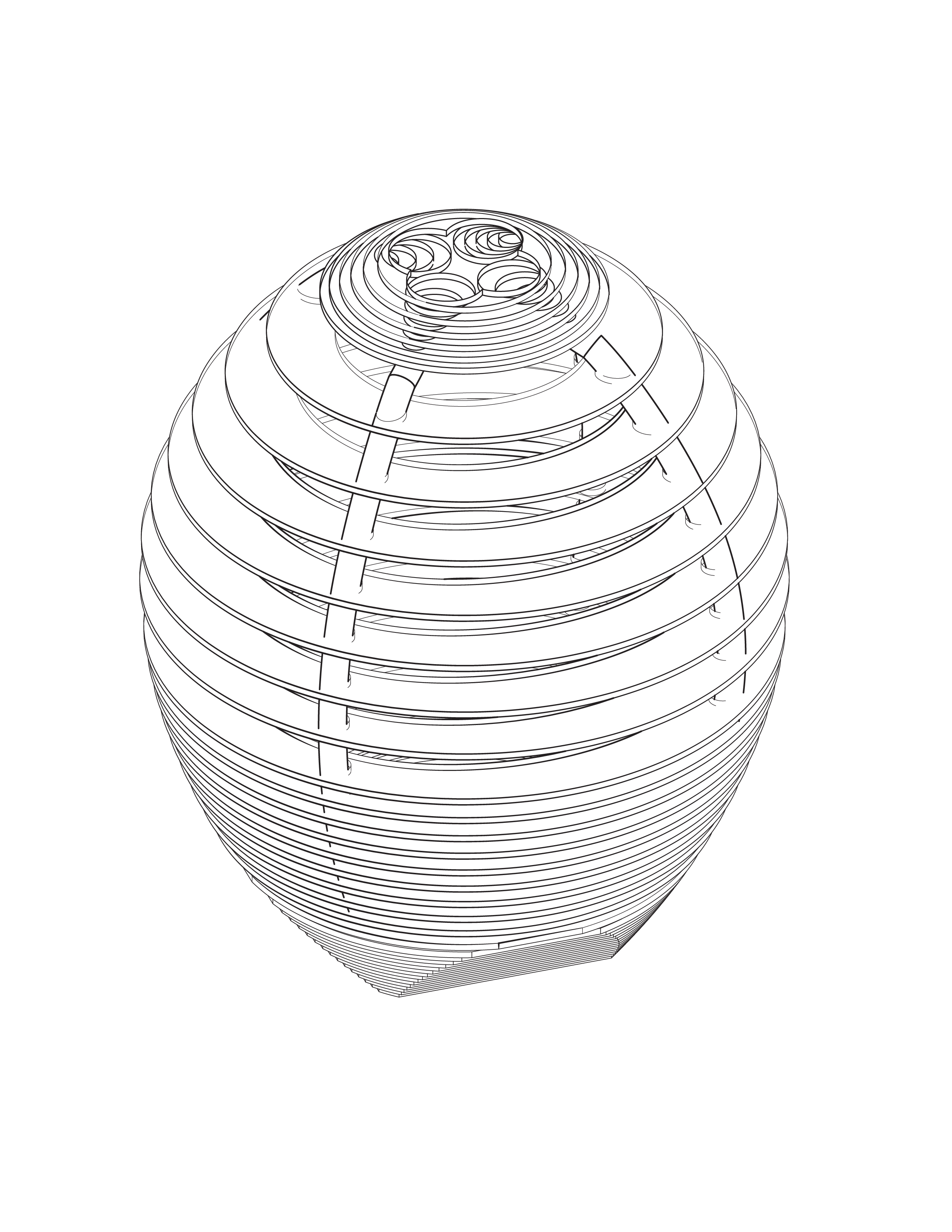Plant Design
We began Arch 212 by selecting a plant to study in-depth, and building a terrarium specifically suited for it. We later translated these concepts into an architecture design in the Soulard Neighborhood at St. Louis.
HCW design an environment that satisfies the succulent's biological needs while providing a safer opportunity for close inspection?
Plant Study
I chose to study mamillaria pilcayensis cristata, a fiarly resilient succulent. It needs a dry, well-lit environment with ventilation and free-draining soil. It should not be watered from above to avoid trapping water in its brain-like folds, rotting the plant.



The cactus has a delicate accordion-like structure and fuzzy appearance, but the sharp needles prevent close inspection.


Final Terrarium





The open design allows for clear visibility.
The small, portable form closely envelops the plant in an egg-like structure that encourages cradling and close observation, something not previously possible.
The tapered surface at the base allows for the terrarium to sit at an angle for better visibility in all directions.
The top several layers of plexi serve as funnels, connecting to the irrigation tubes that double as a sturdy support system.

an open design with structural supports that complements the free-draining earth material to allow water to quickly evacuate the system structural supports double as an irrigation system that allows the cactus to be watered from beneath

the cradle design that provides portable macro observation and clear visibility also allows for maximized open airflow




